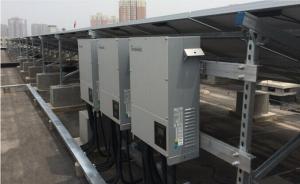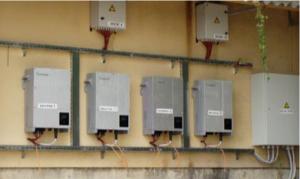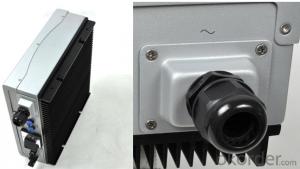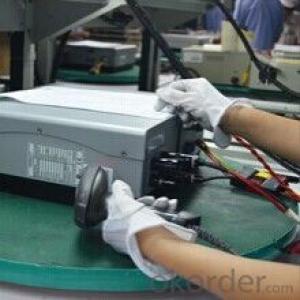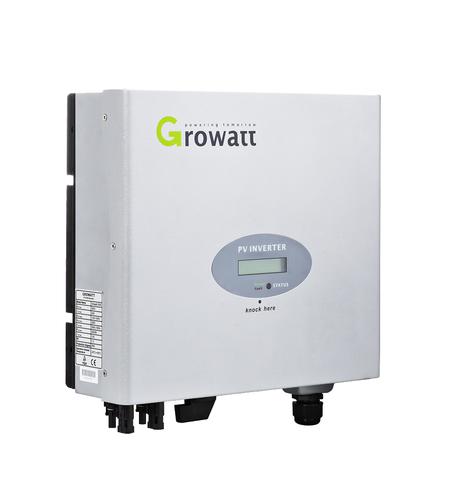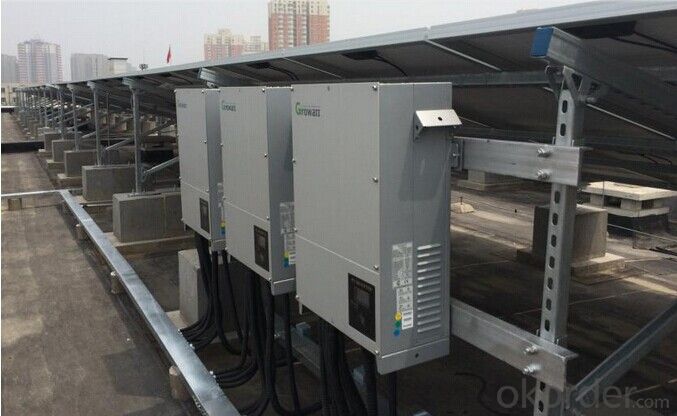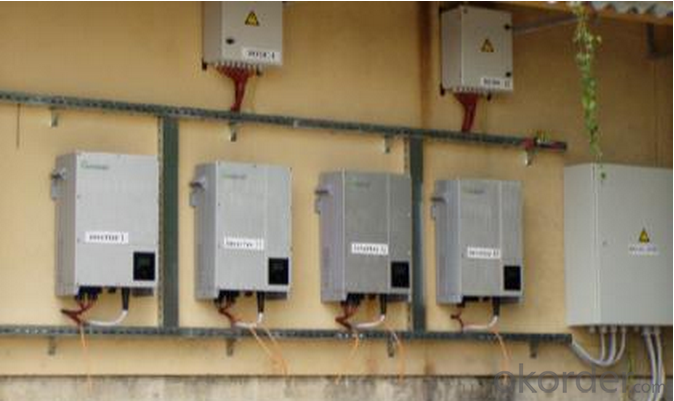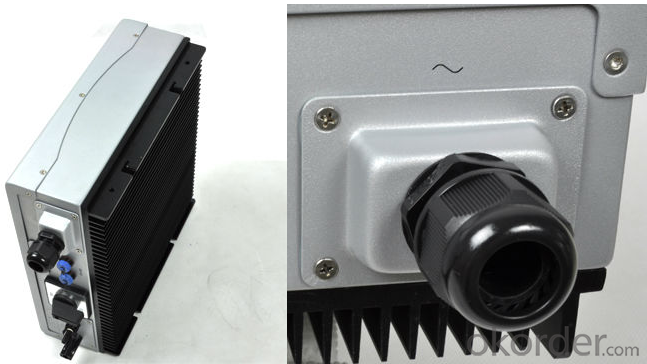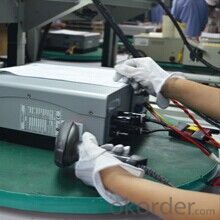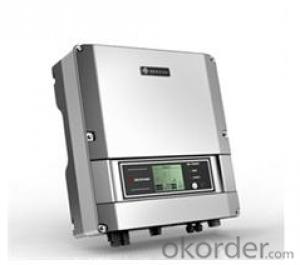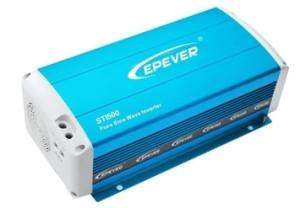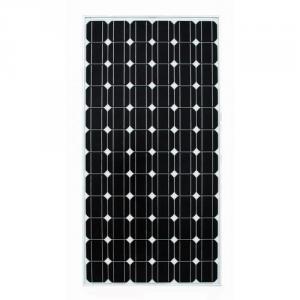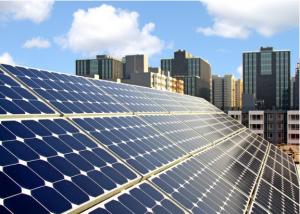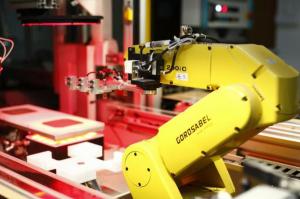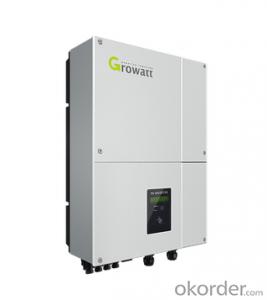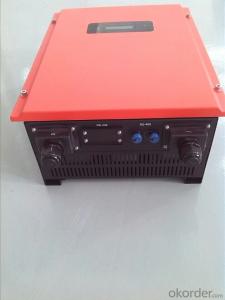Solar Power Inverter 1000W-3000W Grid Tie Solar Inverter
- Loading Port:
- Shekou
- Payment Terms:
- TT or LC
- Min Order Qty:
- 10 pc
- Supply Capability:
- 100000 pc/month
OKorder Service Pledge
OKorder Financial Service
You Might Also Like
Solar power inverter 1000W-3000W grid tie solar inverter
Specifications
Maximum efficiency 97.8%, wide input voltage range
Internal DC switch
Transformerless GT topology
Compact design
1500 2000 3000 4400 5000TL
General Descriptions
Leading-Edge Technology, CE,TUV ,VDE , SAA,DK5940 Certicificates.
> Maximum efficiency of 97.8 % and wide input voltage range
> Internal DC STWTICH
> Transformerless H6 topology
> Compact Design
> MPPT control
> MTL-String
> RS485 RS432 bluetooth Technology
> Comprehensive Growatt warranty program
> Easy country configuration, easy installation
> Multi-language display
Communications
> RS485 /GPRS interfaces
> Computer monitoring software
Safety
> Full protection functions:DC reverse polarity, AC short-circuit protection, ground fault monitoring, grid monitoring, integrate all-pole sensitive, leakage current monitoring unit.
> Standards complied: EN61000-6-1, EN61000-6-2, EN61000-6-3, EN61000-6-4,EN61000-3-2, EN50178, VDE0126-1-1,IEC-62109
FAQ
1. Have any design tool and how to use it?
Shine Design is the system design software just for inverters, It can conduct installers to figure out panel numbers for a system, panel numbers for each string, and which inverter model is suitable for the system. Moreover, it can print a design report after input all necessary parameters, can calculate DC/AC wire wastage, annual generation, etc.
2. Does the inverter have monitoring solutions for residential system?
For small rating system, we have wired two monitoring solution (ShineNet via RS232 or RS485). (a) Local wireless monitoring solution (ShineVision via RF module communication) (b) Global wireless monitoring solution (WIFI module via WIFI network)
3. Do you have free solution for monitoring?
ShineNet is an inverter monitoring software run in Windows XP, Windows Vista, Windows 7 operating system. It can monitor inverter via RS232 (or RS232 convert to USB cable) and RS485 wire connection. Customers can purchase the cable locally to get the inverter monitored, it is simple.
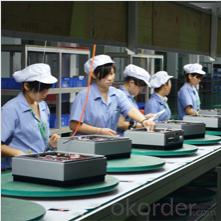
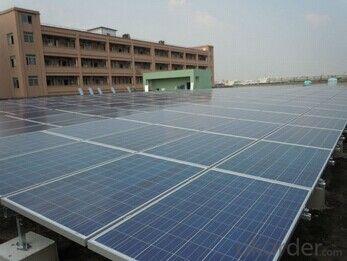
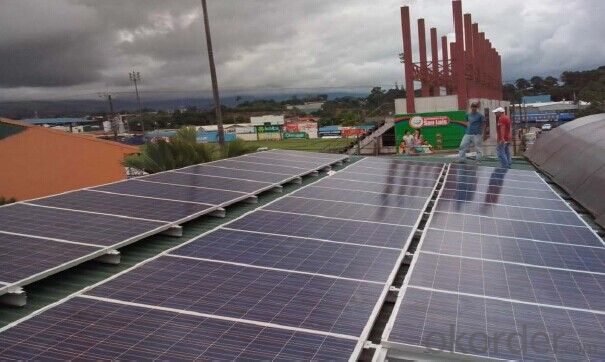
Technical Specifications
Model Specifications | 1500 | 2000 | 3000 | 4000 | 4400 | 5000 |
Input data(DC) | ||||||
Max. DC power | 1800W | 2300W | 3200W | 4200W | 4600W | 5000W/5200W* |
Max. DC voltage | 450V | 500V | 500V | 580V | 580V | 580V |
Start voltage | 150V | 150V | 150V | 150V | 150V | 150V |
PV voltage range | 100V-450V | 100V-500V | 100V-500V | 100V-580V | 100V-580V | 100V-580V |
MPP work voltage range/ nominal voltage | 120V-450V/360V | 120V-500V/360V | 120V-500V/360V | 120V-580V/360V | 120V-580V/360V | 120V-580V/360V |
Full load dc voltage range | 175V-450V | 195V-450V | 250V-450V | 250V-500V | 250V-500V | 250V-500V |
Max. input current | 10A | 12A | 15A | 20A | 20A | 20A |
Max. input current per string | 10A | 12A | 15A | 20A | 20A | 20A |
Number of independent MPP trackers /strings per MPP tracker | 1/1 | 1/2 | 1/2 | 1/3 | 1/3 | 1/3 |
Output (AC) | ||||||
Rated AC output power | 1600W | 2000W | 2850W | 3680W | 4200W | 4600W |
Max. AC power | 1650W | 2200W | 3000W | 4000W | 4400W | 4600/5000W* |
Max. output current | 8A | 11A | 15A | 16A | 21A | 22.7A |
AC nominal voltage; range | 220,230,240V; 180Vac-280Vac | 220,230,240V; 180Vac-280Vac | 220,230,240V; 180Vac-280Vac | 220,230,240V; 180Vac-280Vac | 220,230,240V; 180Vac-280Vac | 220,230,240V; 180Vac-280Vac |
AC grid frequency; range | 50,60H;±5 Hz | 50,60H;±5 Hz | 50,60H;±5 Hz | 50,60H;±5 Hz | 50,60H;±5 Hz | 50,60H;±5 Hz |
Power factor | 1 | 1 | 1 | 1 | 1 | 1 |
THDI | <3%< p=""> | <3%< p=""> | <3%< p=""> | <3%< p=""> | <3%< p=""> | <3%< p=""> |
AC connection | Single phase | Single phase | Single phase | Single phase | Single phase | Single phase |
Efficiency | ||||||
Max. efficiency | 97% | 97% | 97% | 97.8% | 97.8% | 97.8% |
Euro weighted efficiency | 96.5% | 96.5% | 96.5% | 97.4% | 97.4% | 97.4% |
MPPT efficiency | 99.5% | 99.5% | 99.5% | 99.5% | 99.5% | 99.5% |
Protection devices | ||||||
DC reverse polarity protection | yes | yes | yes | yes | yes | yes |
DC switch rating for each MPPT | yes | yes | yes | yes | yes | yes |
Output over current protection | yes | yes | yes | yes | yes | yes |
Output over voltage protection-varistor | yes | yes | yes | yes | yes | yes |
Ground fault monitoring | yes | yes | yes | yes | yes | yes |
Grid monitoring | yes | yes | yes | yes | yes | yes |
Integrated all - pole sensitive leakage current monitoring unit | yes | yes | yes | yes | yes | yes |
General Data | ||||||
Dimensions (W / H / D) in mm | 360/329/132 | 360/329/132 | 360/329/132 | 406/406/192 | 406/406/192 | 406/406/192 |
Weight | 11.5KG | 11.7KG | 12.2KG | 21KG | 21KG | 21KG |
Operating temperature range | –25°C ... +60°C (-13...+140°F) with derating above 50°C /122°F | –25°C ... +60°C (-13...+140°F) with derating above 50°C /122°F | –25°C ... +60°C (-13...+140°F) with derating above 50°C /122°F | –25°C ... +60°C (-13...+140°F) with derating above 50°C /122°F | –25°C ... +60°C (-13...+140°F) with derating above 50°C /122°F | –25°C ... +60°C (-13...+140°F) with derating above 50°C /122°F |
Noise emission (typical) | ≤ 25 dB(A) | ≤ 25 dB(A) | ≤ 25 dB(A) | ≤ 25 dB(A) | ≤ 25 dB(A) | ≤ 25 dB(A) |
Altitude | 2000m(6560ft) without derating | |||||
Self-Consumption night | < 0.5 W | < 0.5 W | < 0.5 W | < 0.5 W | < 0.5 W | < 0.5 W |
Topology | transformerless | transformerless | transformerless | transformerless | transformerless | transformerless |
Cooling concept | Natural | Natural | Natural | Natural | Natural | Natural |
Environmental Protection Rating | IP65 | IP65 | IP65 | IP65 | IP65 | IP65 |
Relative humidity | 95% | 95% | 95% | 95% | 95% | 95% |
Features | ||||||
DC connection | H4/MC4(opt) | H4/MC4(opt) | H4/MC4(opt) | H4/MC4(opt) | H4/MC4(opt) | H4/MC4(opt) |
AC connection | Screw terminal | Screw terminal | Screw terminal | Screw terminal | Screw terminal | Screw terminal |
Display | LCD | LCD | LCD | LCD | LCD | LCD |
Interfaces: RS485/RS232/Bluetooth / RF/Zigbee/Wifi | yes/yes/opt/opt/opt/opt | yes/yes/opt/opt/opt/opt | yes/yes/opt/opt/opt/opt | yes/yes/opt/opt/opt/opt | yes/yes/opt/opt/opt/opt | yes/yes/opt/opt/opt/opt |
Warranty: 5 years / 10 years | yes /opt | yes /opt | yes /opt | yes /opt | yes /opt | yes /opt |
Certificates and approvals | CE,VDE 0126-1-1,DK5940,G83/1-1,G59/2,RD1663,EN50438,VDE-AR-N4105,CEI-021,IEC-62109,ENEL-Guide | CE,G83/1-1 | CE,VDE 0126-1-1,DK5940,G83/1-1,G59/2,RD1663,EN50438,IEC-62109,ENEL-Guide | |||
- Q: Can a solar inverter be used in a mobile or RV application?
- Yes, a solar inverter can be used in a mobile or RV application. It allows the conversion of direct current (DC) from solar panels into alternating current (AC) that can be used to power appliances, devices, and other electrical equipment inside the mobile or RV. This enables the vehicle to utilize solar energy for various power needs while on the move.
- Q: Can a solar inverter be used with a string inverter system?
- No, a solar inverter and a string inverter system are two different types of inverters used in solar power systems. They cannot be used interchangeably as they have different functionalities and are designed for different types of solar installations.
- Q: What is the typical lifespan of the capacitors in a solar inverter?
- The typical lifespan of capacitors in a solar inverter can vary depending on various factors such as the quality of the capacitors, operating conditions, and maintenance practices. However, on average, capacitors in a solar inverter are expected to have a lifespan of around 10 to 15 years.
- Q: How does a solar inverter handle grid frequency deviations?
- A solar inverter handles grid frequency deviations by constantly monitoring the grid frequency. When the grid frequency deviates from the standard range, the inverter adjusts its output frequency accordingly to match the grid frequency. This allows the inverter to maintain synchronization with the grid and continue injecting power efficiently, ensuring stability and reliability of the solar power system.
- Q: Can a solar inverter be used in a multi-string configuration?
- Yes, a solar inverter can be used in a multi-string configuration. A multi-string configuration refers to connecting multiple strings of solar panels to a single inverter. This setup allows for better utilization of the inverter's capacity and can accommodate larger solar installations.
- Q: How does a solar inverter handle voltage unbalance in the grid?
- A solar inverter handles voltage unbalance in the grid by continuously monitoring the grid voltage levels. If it detects voltage unbalance, it adjusts the output power accordingly to maintain a balanced operation. This is achieved through internal control algorithms that ensure each phase of the grid receives the appropriate amount of power, correcting any imbalances and preventing potential damages to the solar inverter or the grid.
- Q: How does a solar inverter handle voltage and frequency variations caused by load shedding?
- Load shedding causes voltage and frequency variations, which a solar inverter can handle through its built-in mechanisms and control systems. When these variations occur, the inverter detects them and adjusts its operation accordingly. To handle voltage variations, the inverter employs a voltage regulation system. It continuously monitors the grid voltage and compares it with the standard level. If the grid voltage goes beyond the acceptable range, the inverter adjusts its internal voltage conversion process to maintain a stable output voltage. This ensures that the solar panels generate power within the acceptable voltage limits, minimizing negative effects from voltage fluctuations. Similarly, for frequency variations caused by load shedding, the inverter has a frequency regulation mechanism. It monitors the grid frequency and compares it with the standard level. If there are frequency deviations, the inverter adjusts its internal synchronization process to match the grid frequency. This allows the inverter to synchronize with the grid and feed the generated solar power in a way that is compatible with the grid's frequency. Apart from voltage and frequency regulation, solar inverters often have additional functionalities to enhance their ability to handle load shedding variations. These can include anti-islanding protection, which disconnects the solar system from the grid during a power outage to protect utility workers. Some advanced inverters also have energy storage capabilities, allowing them to store excess solar energy and provide uninterrupted power during load shedding events. Overall, solar inverters are specifically designed to handle voltage and frequency variations caused by load shedding. Through their regulation and control systems, they ensure that the solar power generated remains stable and compatible with the grid, providing a reliable and efficient power supply even in challenging grid conditions.
- Q: Can a solar inverter be used in a solar-powered telecommunications system?
- Yes, a solar inverter can be used in a solar-powered telecommunications system. A solar inverter is an essential component in such systems as it converts the DC (direct current) electricity generated by the solar panels into AC (alternating current) electricity, making it compatible with the telecommunication devices and equipment.
- Q: What is the role of a solar inverter in a microgrid system?
- The role of a solar inverter in a microgrid system is to convert the direct current (DC) electricity generated by solar panels into alternating current (AC) electricity that can be used to power various appliances and devices within the microgrid. Additionally, the solar inverter helps manage the flow of electricity between the microgrid and the main utility grid, allowing for efficient energy distribution and grid stability.
- Q: Are solar inverters compatible with smart home systems?
- Yes, solar inverters are compatible with smart home systems. In fact, many modern solar inverters are designed to integrate seamlessly with smart home technology, allowing homeowners to monitor and control their solar energy production and consumption through their smart devices. This integration enables better energy management, increased efficiency, and the ability to optimize the use of solar power within a smart home ecosystem.
Send your message to us
Solar Power Inverter 1000W-3000W Grid Tie Solar Inverter
- Loading Port:
- Shekou
- Payment Terms:
- TT or LC
- Min Order Qty:
- 10 pc
- Supply Capability:
- 100000 pc/month
OKorder Service Pledge
OKorder Financial Service
Similar products
Hot products
Hot Searches
Related keywords

